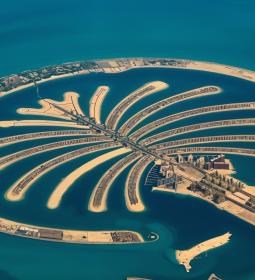Japan is a dream, not a country! It's a place where futuristic skyscrapers coexist with ancient temples, where sushi is really fresh and trains run to the second. But many are afraid to even think about traveling, imagining their bank account burning from the prices of housing, transport and food.
Spoiler: everything is not so scary. Here's a plan to help you see Japan in all its glory without selling a kidney.
Choosing the season: when to fly so as not to spend too much
In Japan, it is always beautiful, but there are two seasons when everything becomes especially fabulous - spring with cherry blossoms and autumn, when maples light up with red and yellow shades. That's perfect? Yes, but there is a nuance: it is during these months that housing prices soar.
If you want to save money, it is better to go in June, September or November: at this time there are fewer tourists, accommodation is cheaper, and nature is still pleasing to the eye. But February (gray and cold) and August (stuffiness and humidity) are not the best months for a trip.
If you still want to get to the sakura, then you need to book hotels much in advance, otherwise you will have to overpay a large amount.

Building a route and calculating transportation costs
The optimal duration of the trip is at least 10 days, and preferably two weeks, otherwise you will have to gallop, not having time to enjoy the atmosphere.
How to choose a route?
Japan is huge, and you can't cover everything in one trip. A good basic option for a first trip is Tokyo, Osaka, Kyoto, Nara and Hiroshima. This will give you the opportunity to see megacities, temples, nature and even a little history.
It is best to fly to Osaka, and fly from Tokyo - this way you can save on tickets and trains, because transport in Japan is a separate expense item.
If you don't want to constantly move, you can remove Kanazawa, Takayama and Matsumoto and add a couple of days in Tokyo.
How to save on transport
-
Rechargeable transport cards
The first thing you need to do when you arrive is to buy Suica (in Tokyo) or Icoca (in Osaka): these are cards that can be used to pay for subways, buses and even purchases in stores. Without them, each ticket will have to be bought manually, and this is inconvenient.

-
Buses instead of trains
Japan is famous for its ultra-high-speed Shinkansen, but tickets for them are hell for the wallet. If you want to cut costs, you should pay attention to intercity buses: for example, the Japan Bus Pass allows you to travel around the country for 5 days for 12,800 yen.
-
Tickets-passes
There are regional passes — special tickets that allow you to travel by transport without limits. For example, the Osaka Amazing Pass (5500 yen) gives not only travel, but also free tickets to museums and observation decks.
-
Be careful with the JR Pass!
Japan Rail Pass used to be a bargain, but now its price has gone up, and it only pays for itself with frequent moves. Before buying, it is better to calculate whether it will really help you save money.
-
Taxis are taboo
In Japan, not only housing is expensive, but also taxi.
Where to live?
Housing options are the following:
- Hostels,
- Business hotels (small but comfortable rooms),
- Ryokan (traditional hotels with onsen).
Where to stay:
- Tokyo - Shinjuku, Shibuya, Asakusa,
- Osaka - Namba, Umeda,
- Kyoto is the Gion district (old town).

Visa: easier than it seems
The good news is that the visa is free! Preparing the following documents:
- Passport
- Application form (in English),
- A copy of the local passport,
- Booking air tickets and accommodation,
- The program of the trip,
- Certificate of employment (or bank statement).
After submitting documents to the consulate, a visa is issued quite quickly - within 3-5 days. However, it is short-term, only for the duration of the trip.
A couple of nuances
Before the trip, you need to solve several organizational issues:
- Connection. For example, eSim Mobalo - 50 GB, works perfectly.
- The money. Cash is still often accepted in Japan. It is better to exchange money immediately at the airport.
- Sockets. You need a type A adapter, and the voltage is 100-110 V, so powerful devices may not work.
- Etiquette. In Japan, it is not customary to talk loudly in transport, smoke in public places and leave tips.
Where and what to eat?
Japan is a gastronomic paradise. Even the food from the 7/11 store and FamilyMart is delicious and cheap: sandwiches, rolls, hot dishes - everything is in the range of 500-800 yen.
On trains, you should definitely try bento - boxes with various Japanese dishes.
So traveling to Japan is not a luxury, but a very real goal! The main thing is to plan the route correctly, book accommodation in advance and know where you can save money. Then you will be able not only to see the country of your dreams, but also not to go broke.













